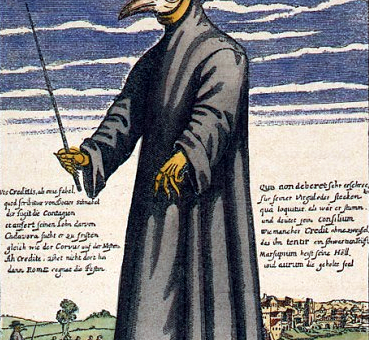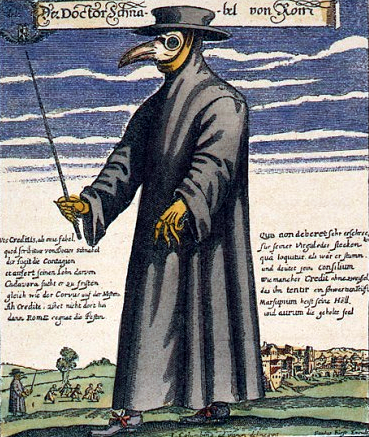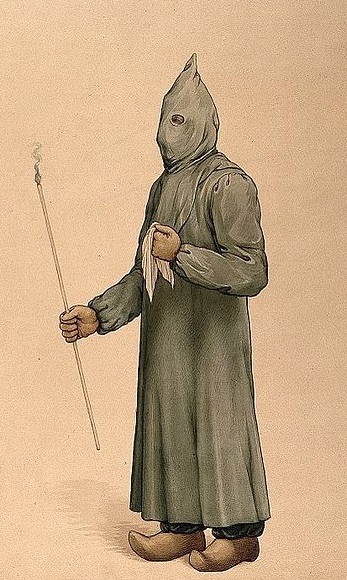
The Black Death wiped out roughly 50 percent of Europe’s population in the fourteenth century. Its victims first showed flu-like symptoms. They had fever and chills, and became extremely weak. While confined to bed, which was usually dirty straw on a damp floor, the sick began vomiting and their bowels loosened. They began to bleed from the nose, mouth, or rectum. Finally, tissue began to die and the nose, fingers, and toes became black.
The Black Death moved fast. Those infected began to show their first signs of sickness within two to seven days.
There was no cure for the disease, and those who were infected would die.
Whenever the plague hit the cities, the wealthy were the first to flee. Next, the city’s doctors would pack up their families and head for cleaner air. That left the cities filled with the poor and uneducated.

Men known as plague doctors were hired from those who remained behind. These men were mostly uneducated in medicine, but the city paid them extremely well because of the danger involved.
The plague doctors would visit the homes of the sick. They would examine patients and look for signs of the plague. Those who showed the tell tale signs of plague were quarantined inside their homes and the plague doctors would document each case and its location.
Because these men were in constant contact with the sick, they were also highly prone to getting the plague and bringing it home to their families. Most of the time, over half of the plague doctors hired by the cities would die from the plague.
In the 1600s, a protective outfit for plague doctors began to develop and soon its use spread across Europe.
First, there was the special coat. The long coat reached down to the plague doctor’s feet. It was made of fine linen cloth that was coated in an aromatic wax or lard to prevent the infected air from absorbing into the clothing. The coat would either have a high collar or it was hooded, and the doctors were required to pull the hood over their heads to protect them. If they did not have a hood, they would wear a wide-brimmed hat for protection.
In Italy, the coat might have been red, distinguishing the plague doctor from others, but other accounts across Europe generally say that his coat was black.
Under the coat, leather pants were worn. These might also have been coated in wax or lard.
There was also the frightening plague mask. The long nose beak on the mask earned the plague doctors the name of Dr. Beak. It was stuffed with straw, herbs, and spices in the belief that the air was poisonous and that the pleasant smells would clean the bad air.

Surprisingly, the mask’s eye holes were covered in glass. Clear glass was used to protect the plague doctors eyes from the poisonous air, but red glass would also be used to help ward off evil.
Plague doctors were illustrated carrying a cane. It is believed that the cane was used to point things out to family members because the mask got in the way of speaking. He might also have used to cane to move a plague victim’s body and to inspect the visibly afflicted parts of a patient.
For centuries before the discovery of bacteria and viruses, doctors believed that the plague was spread through the air. The air in a particular location could become soured and filled with poisons that caused sickness.
This is why the plague doctors dressed to extremes. They wanted to protect their bodies from the foul air, and it was not yet known that the plague was being spread by fleas who fed off of plague infected rats.


1 thought on “Understanding the Plague Doctor’s Mask and Costume”
Comments are closed.